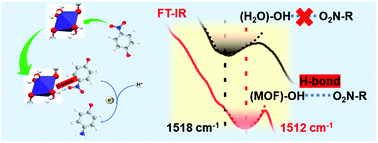Electrocatalytic reduction of 4-nitrophenol over Ni-MOF/NF: understanding the self-enrichment effect of H-bonds†
Abstract
The chemical adsorption and active sites play a key role in electrocatalysis, so Ni-MOF/nickel foam was fabricated for efficiently reducing 4-nitrophenol (4-NP) without any sacrificial agents. The coordinated water molecules induced the formation of hydrogen bonds (H-bonds) with the nitro group, contributing to the self-enrichment of 4-NP. The reaction rate reached 0.351 μmol min−1 mg−1. Therefore, this work provides a new insight into the H-bond effect in the field of electrocatalysis.



 Please wait while we load your content...
Please wait while we load your content...